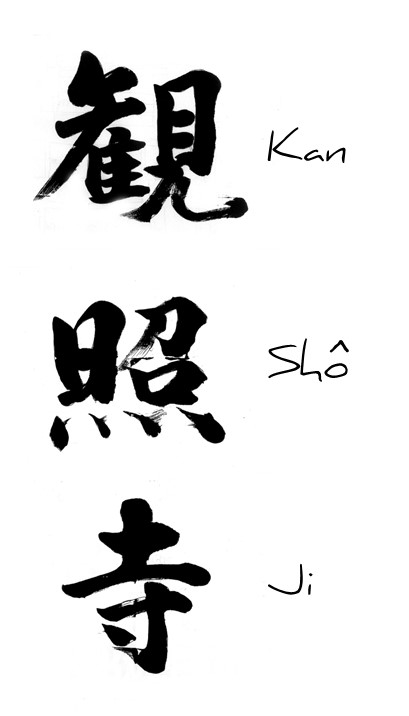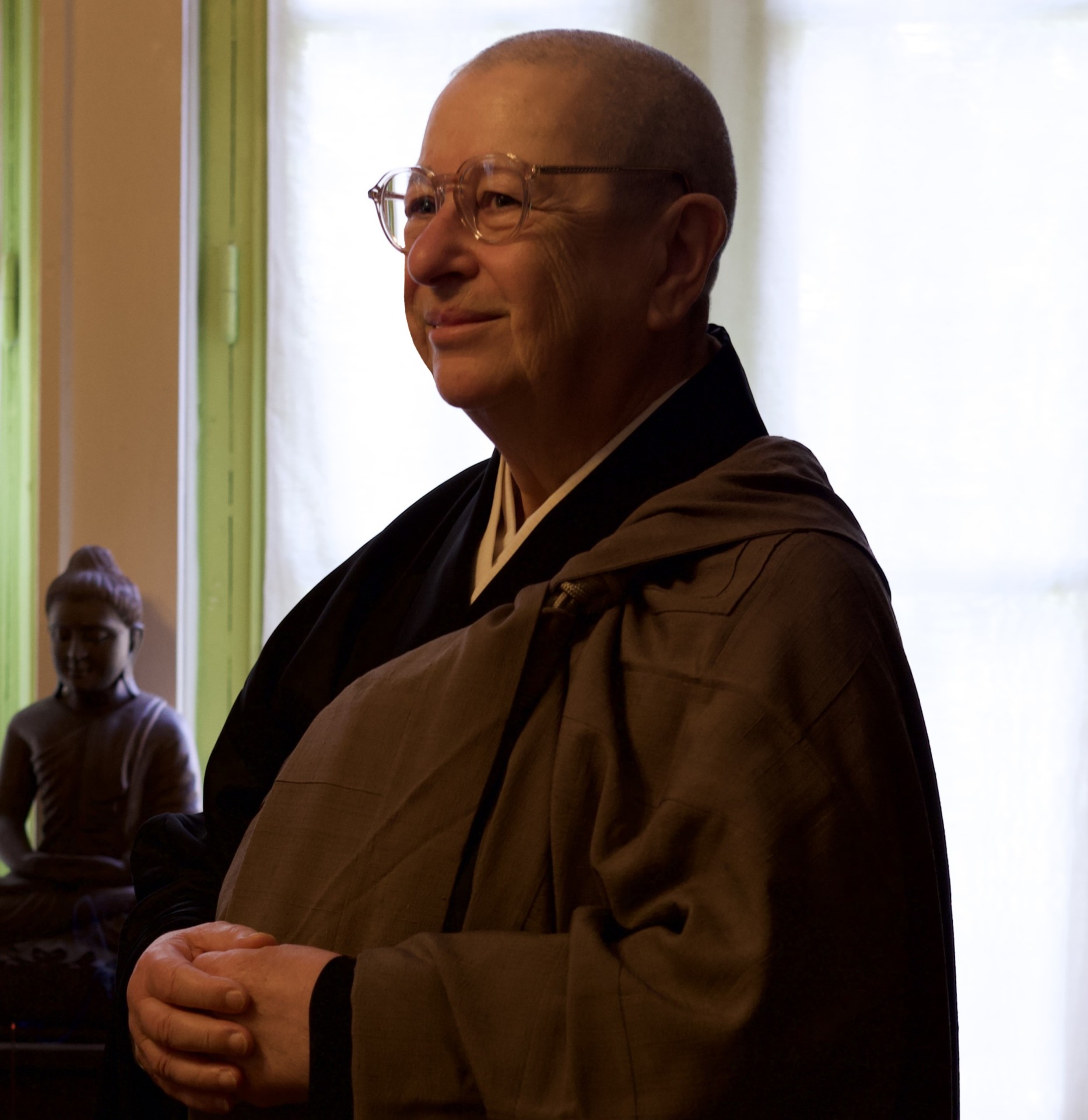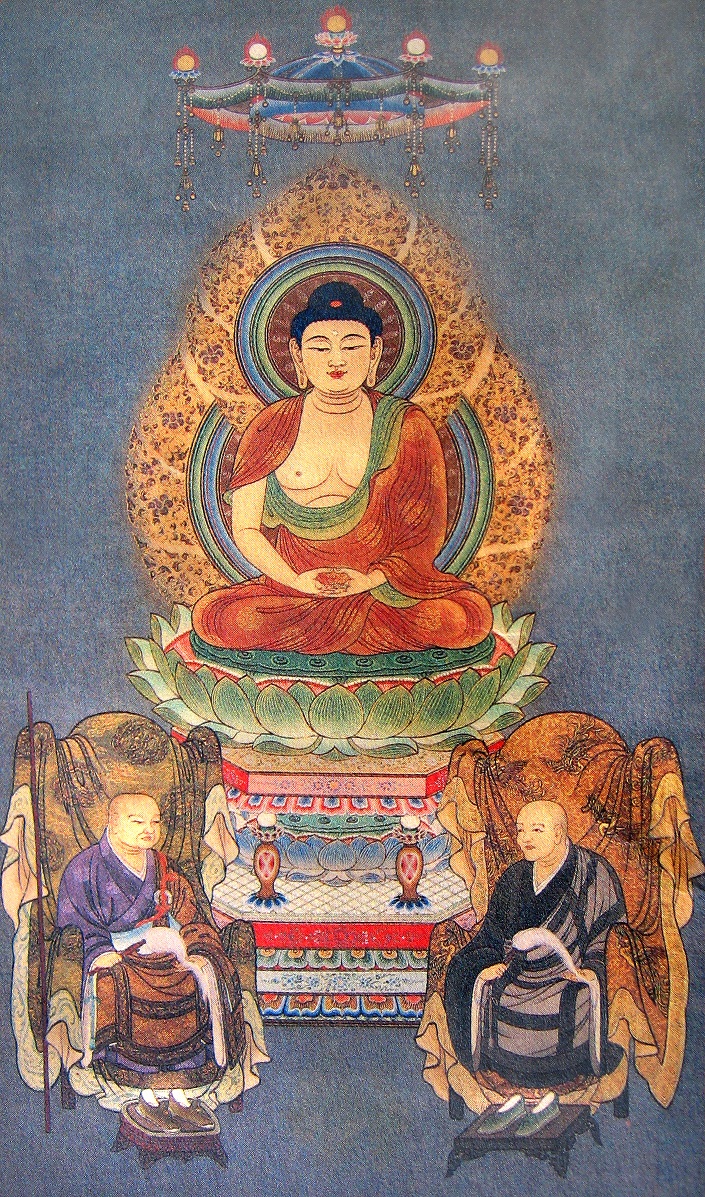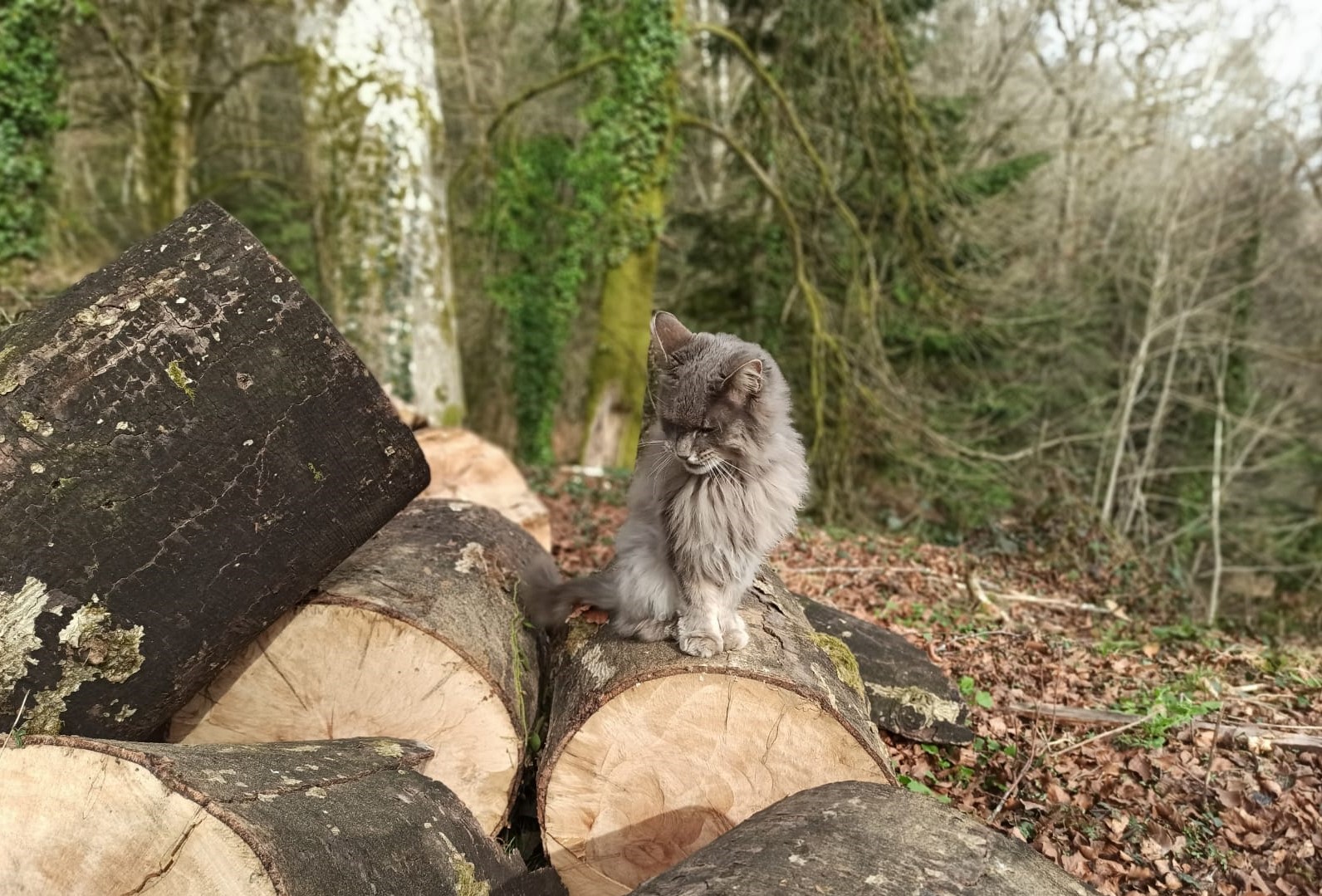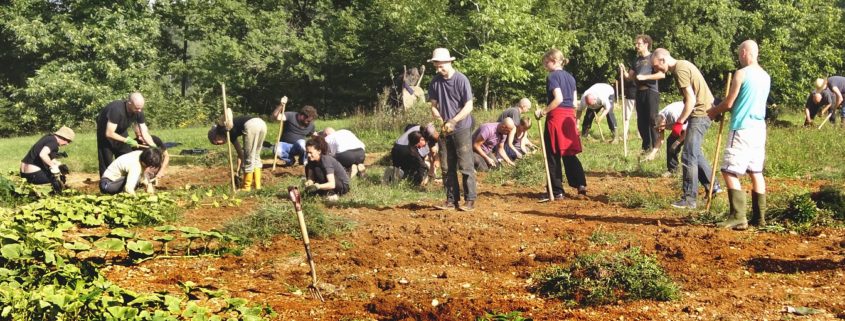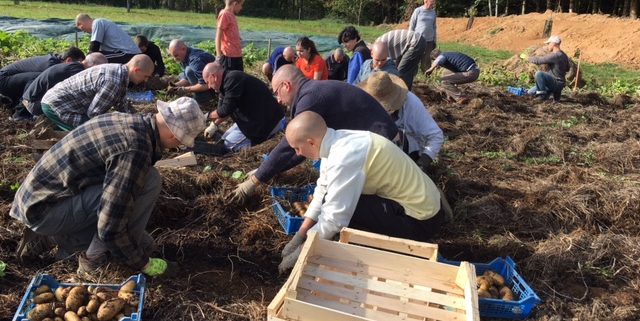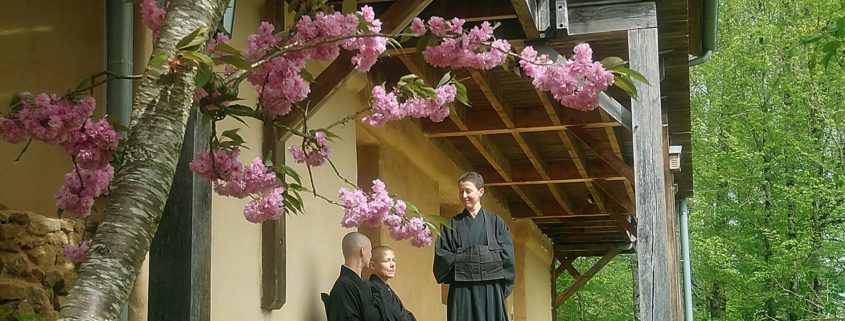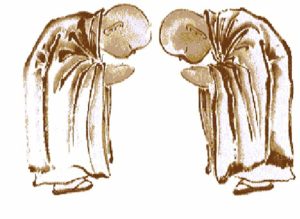KANSHOJI, Monastery of the Light of Kannon
Kanshoji is a Sôtô Zen Buddhist monastery, located in France.
In the Dordogne region, in the heart of Périgord-Limousin natural park, it overlooks a large lake surrounded by forests.
The tranquility and beauty of nature make it an ideal place for the practice of the Buddha Way.
This Buddhist monastery is a school of life, open to anyone wishing to discover, deepen and practise Buddha’s teaching.
It is also aimed at training monks and nuns who will one day transmit the teachings.
Its abbot, Taiun Jean-Pierre Faure, was ordained a monk by Taisen Deshimaru Roshi and was certified as a Sôtô Zen teacher by Dônin Minamisawa Zenji.
His teaching is vivid and responsive, while at the same time being rooted in the fundamental tenets of our school.
Kanshoji literally means : Monastery of the Light of Compassion.
Kan, Kannon : bodhisattva* of compassion
Sho : light
Ji : monastery.
In Buddhism, awakening is synonym for wisdom and compassion. When he awakened, Buddha became the All-Knowing, the Great Compassionate One.
With the practice of meditation, the mind makes itself available to see things as they are. The heart opens to non-separation between Self and other. Other’s happiness becomes my happiness, their suffering becomes my suffering.
Kannon (Kan : to see On : sound) is the one who hears the sounds of the world; he sees and hears the suffering human beings.
When we realise our unity with others that the right way to respond to their suffering can emerge.
Sutra of the Four Bodhisattva Vows
Beings are numberless,
I vow to free them.
Passions are endless,
I vow to overcome them.
Dharmas are boundless,
I vow to practice them.
The Buddha Way is perfect,
I vow to realise it.
Dônin Minamisawa Zenji, the founder of Kanshoji
Born in 1927 in Nagano Prefecture, Dônin Minamisawa Zenji is the abbot of Eiheiji, one of the two main temples of Sôtô Zen. He met Taiun Jean-Pierre Faure in 2001 at La Gendronnière temple (France). Taiun Faure became his disciple and helped him found the Zen Buddhist monastery Kanshoji in Dordogne (France).
In the days following the inauguration of the Kanshoji monastery in 2003, he gave the Dharma transmission to his first European disciple Taiun Faure, who became abbot in 2011.
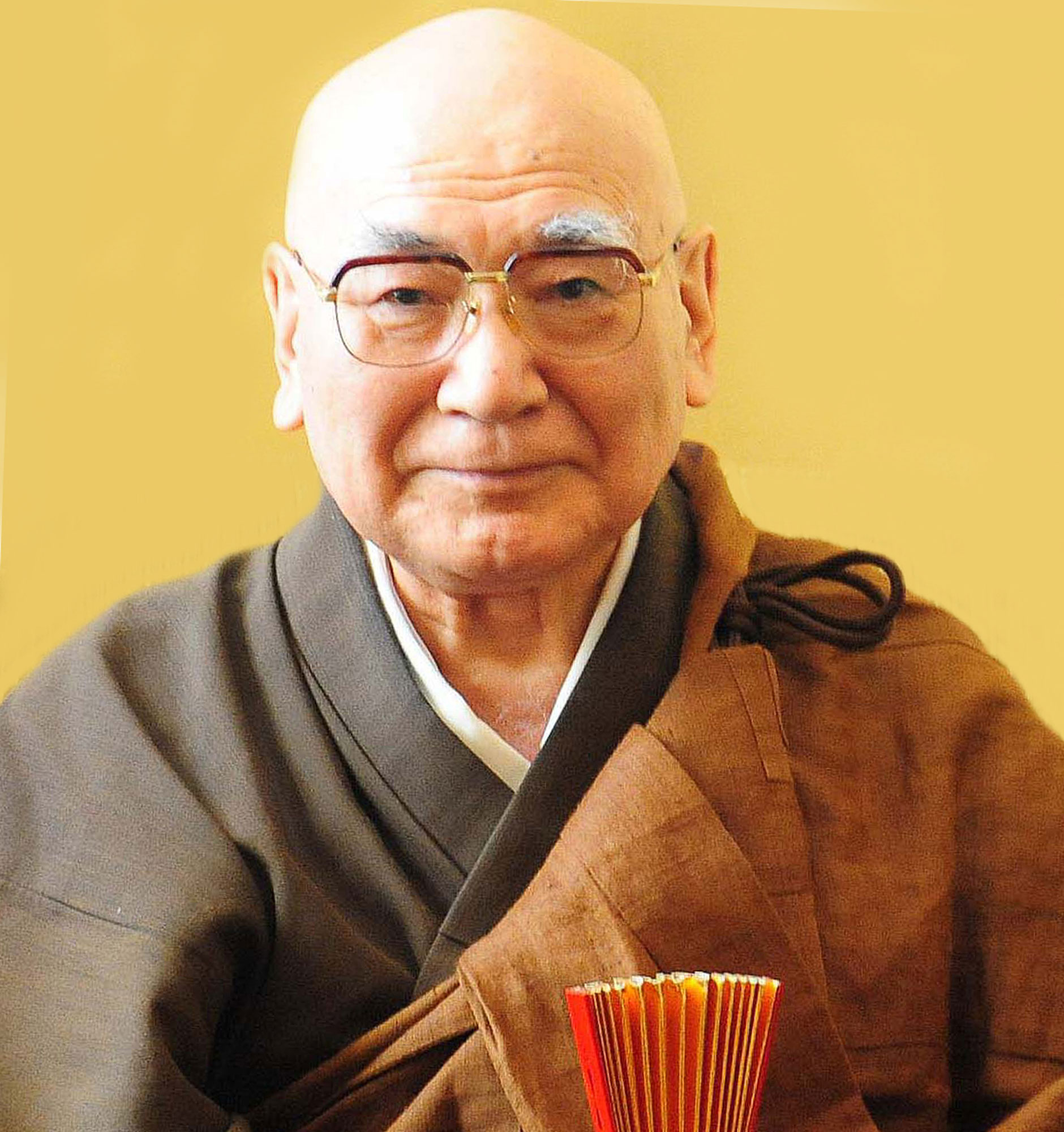
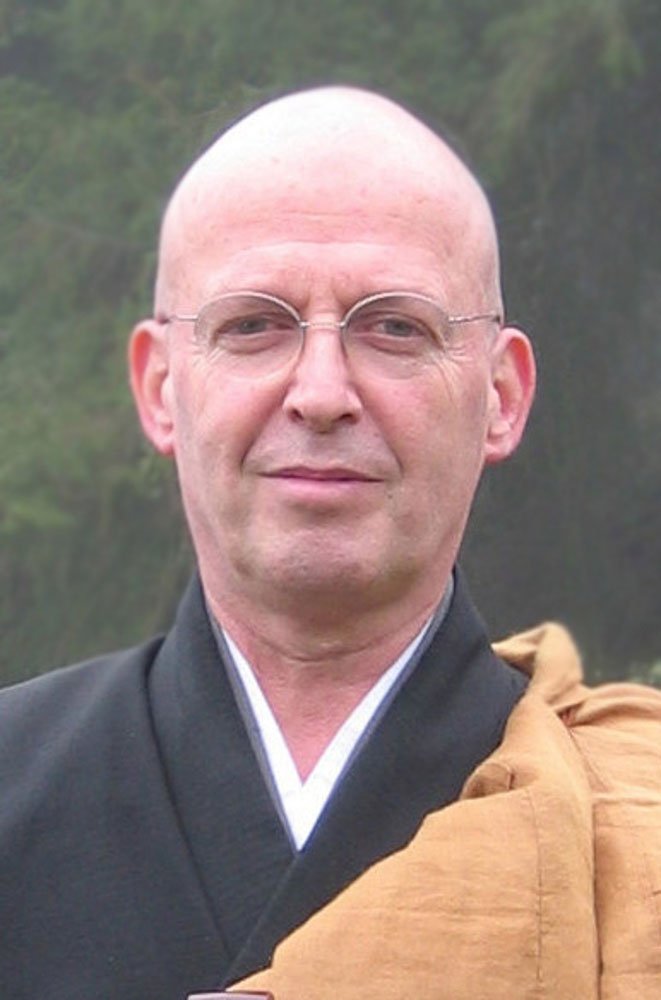
Taiun Jean-Pierre Faure, the abbot of Kanshoji
Taiun Jean-Pierre Faure, the founding abbot of Kanshoji, received the monk’s ordination in 1981 from master Taisen Deshimaru and became his disciple.
Twenty years after master Taisen Deshimaru’s death, he received the Dharma transmission from master Dônin Minamisawa and became a certified Sôtô zen teacher.
He maintains a close tie with his master, Dônin Minamisawa, the founder of Kanshoji monastery, for zen is transmitted from person to person in an intimate and completely trusting relationship: the master-disciple relationship.
Video on the ties between Taiun JP Faure, the founding abbot, and his master, Dônin Minamisawa Zenji
Hosetsu Laure Scemama, the abbess of Kanshoji
Laure Hosetsu Scemama, the abbess of Kanshoji, received nun’s ordination from Master Deshimaru in 1982. For more than 40 years, she has practised alongside Taiun Roshi. She took part as a founding member in the creation of the Monastery of Kanshoji (Dordogne). In 2003, she created the Limoges Zen Centre where she teaches. In 2008, she received the Dharma transmission from Master Dônin Minamisawa.
Hosetsu Laure Scemama, abbess of Kanshoji
And if we go further back in time
2600 years ago in India, Shakyamuni Buddha awakened while sitting in zazen under the bodhi tree. This practice has since been transmitted uninterruptedly from generation to generation. As a tribute to this transmission, we recite our lineage every morning in the monastery.
In the 6th century, Bodhidharma left Sri Lanka and travelled to China, where the experience of awakening developed under the name Ch’an.
In the 13th century, back from China, master Dôgen established Sôtô zen in Japan, where he founded Eiheiji monastery.
Two generations later, master Keizan continued master Dôgen’s mission and founded Sôjiji monastery.
In 1967, Taisen Deshimaru travelled to Europe, where he taught the practice of zen. Until his death in 1982, he educated a large number of disciples, opened over a hundred centres of practice, created the International Zen Association (AZI) and founded the Gendronnière temple in the Loir-et-Cher department.
Yashô Valérie Guéneau, a disciple of the founding abbot, speaks about the Master-Disciple relationship during the “Sagesses Bouddhistes” TV broadcast on France 2.
Residents live all year round at Kanshoji. Among them are monks and nuns who receive the training that will one day enable them to transmit Buddha’s teaching.
Others come for retreats, for a few days, weeks or months… They discover Buddha’s teachings and put them into practice in their daily life.
Master Deshimaru said: “Zen is zazen, and every other thing in life”. Doing zazen (meditation without object) means absorbing ourselves completely in the sitting posture; just that, nothing else.
With this same mindset, we absorb ourselves selflessly in all our daily activities, being present to the world, here and now. That is how we can respond wholeheartedly to the situations that befall us.
| 5.30 am | Wake-up |
| 6.00 am | zazen – ceremony – traditional breakfast |
| 8.20 am | dishwashing, vegetable preparation, cleaning |
| 9.15 am | tea-coffee, sharing with the abbot |
| 9.30 am | activities for the community (samu) |
| 12.30 pm | lunch |
| 2.30 pm | samu |
| 5.30 pm | shower & free time |
| 6.30 pm | dinner |
| 8.15 pm | zazen |
| 9.00 pm | lights out |
Doing things as they must be done,
wholeheartedly, expecting nothing in return.
Tsugen Narazaki.
That is what we practice when we sit zazen, when we chant sutras, when we take our meals in silence… when we weed the vegetable garden, clean the monastery, or cut vegetables …
True Buddhism is cultivated at the heart of everyday life.
Kohô Chisan
All actions performed throughout the day express our gratitude for the life that has been given us.
Kanshoji Zen Association, founded in 2002, seeks to:
- enable the study and practice of Sōtō zen, founded by Shakyamuni Buddha, master Dôgen and master Keizan, and transmitted to Europe by master Taisen Deshimaru.
- spread and make known awareness of Sôtô zen teaching and practice.
- contribute to the realisation of true freedom of the mind and a better understanding between humans, without discrimination based on gender, race, nationality, belief or religion.
- see to the upkeep of the resident monks and nuns.
- ensure the training of monks and nuns.
Start/Renew your AZK (Association Zen Kanshoji) membership
Your membership will become effective upon receipt of your payment.
